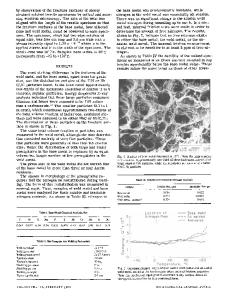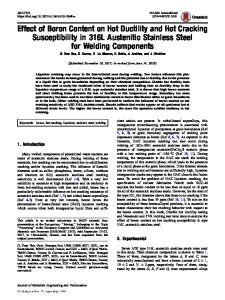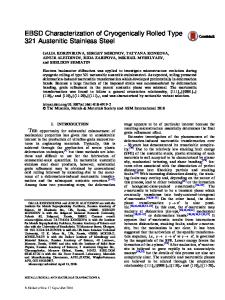Hot Ductility Characterization of Sanicro-28 Super-Austenitic Stainless Steel
- PDF / 4,968,333 Bytes
- 12 Pages / 593.972 x 792 pts Page_size
- 50 Downloads / 354 Views
INTRODUCTION
SUPER-AUSTENITIC stainless steels hold unique advantages of outstanding mechanical properties and excellent corrosion resistance in a wide range of temperature.[1–4] Consequently, these are successfully selected as the structural materials applied in several aggressive fields, such as chemical, petrochemical, the oil, and gas transformation industries as well as offshore piping.[5,6] However, in order to construct the products with desired properties along with the high production rate, the essential working processes, specifically high-temperature processing sequence, need to be well known and planned.[7] In general, the formability of the metals and alloys is postulated to improve by increasing the temperature, not only due to the activation of extra slip systems but also emerging the new deformation mechanisms.[8–10] However, it is speculated that the hot ductility of super-austenitic stainless steels, as one of the most strategic engineering alloys, might be limited by a number of reasons including the generation of various
A. MIRZAEI, Research Assistance, A. ZAREI-HANZAKI, Professor, and H.R. ABEDI, Ph.D. Student, are with The Complex Laboratory of Hot Deformation & Thermomechanical Processing of High Performance Engineering Materials, School of Metallurgy and Materials Engineering, College of Engineering, University of Tehran, Tehran, Iran. Contact e-mail: [email protected] Manuscript submitted September 9, 2015. METALLURGICAL AND MATERIALS TRANSACTIONS A
deformation inhomogeneities such as shear bands and wedge cracking or by some other metallurgical incompatibilities.[11,12] The drastic decrease in the hot ductility of materials has been previously observed in different steel grades such as twinning-induced plasticity steels,[13] Al-killed boron steels,[14] low carbon advanced high strength steel,[15] boron microalloyed steels,[16] duplex stainless steels,[17] and Nb-microalloyed steels.[18,19] For instance, the presence of detrimental grain boundary precipitates or impurities are known as the major reasons for the hot ductility drop in high nickel steels, which are traditionally considered as workable materials at both low and high temperatures.[20] The segregation of unfavorable elements such as sulfur and phosphorous at the grain boundaries and the formation of deleterious easy-melting compounds have been also introduced as the most serious metallurgical problems limiting the hot ductility.[21,22] All together, the hot ductility is subjected to a dramatic decrease due to the various mechanisms which would be activated at higher temperatures such as grain boundary sliding followed by cracking (W and R-type cracks formation), strain concentration and flow localization in a more ductile phase, incipient melting reactions, and diffusional transformations.[23–25] In contrast, an enhanced ductility is often achieved where the dynamic restoration processes, i.e., dynamic recovery and dynamic recrystallization, are dominant during the high-temperature deformation. Crowther and Mintz[23]
believe that wh
Data Loading...











